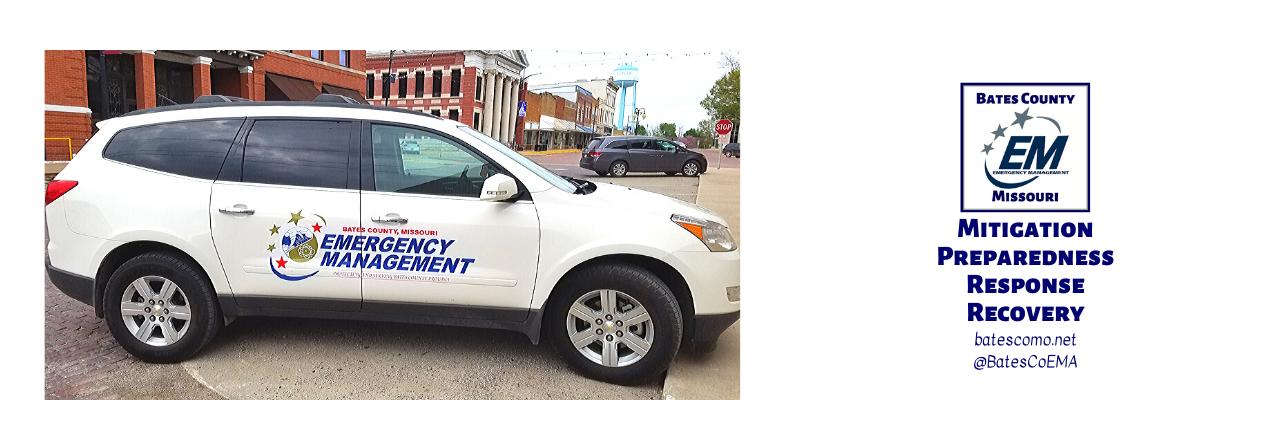
“What is Emergency Management? What does an EMA do? How does the EMA serve the county? Who does the EMA work with?”
These are all questions we encounter on a regular basis. Many people have only heard of the Federal Emergency Management Agency. They aren’t aware there is a State Emergency Management Agency as well as Emergency Management on the county level.
On this page, you will find information on the Bates County, MO Emergency Management Agency such as our mission statement, definitions of our job and actions, and our partners.
Question: What is an Emergency Management Agency?
Answer: An agency created to lead America to prepare for, prevent, respond to and recover from disasters with a vision of “A Nation Prepared.”
Question: Who/What grants an EMA authority?
Answer: The Stafford Act gives EMAs the responsibility for coordinating government-wide relief efforts. (Beginning at the Federal level and trickling down through the state to the county level.)
Question: How does an EMA serve a county?
Answer: During non-emergency times, the Emergency Management Director and his staff help to coordinate, plan, sponsor, and enable their partners to participate in training and community efforts to prepare for actual emergencies. During an actual emergency, the EMD opens the Emergency Operations Center (EOC) to help keep information flowing and keep efforts from being duplicated or missed in the chaos. The EMD facilitates cooperation among local government, volunteer, and private-sector organizations, as well as representatives at the state and federal level when necessary.
Question: Who does the EMA work with?
Answer: This may be a long list. We work with everyone interested in emergency preparedness. This includes (but is not limited to): fire, police, sheriff, ems, 911 operators, volunteer organizations, local business owners, faith-based groups, other EMAs, healthcare facilities, and many more!


Mitigation is the effort to reduce the loss of life and property by lessening the impact of disasters.
Preparedness is a continuous cycle of planning, organizing, training, equipping, exercising, evaluating, and taking corrective action in an effort to ensure effective coordination during incident response.
Response is putting your preparedness plans into action during an emergency.
The recovery phase includes actions taken to return to a normal or an even safer situation following an emergency.
